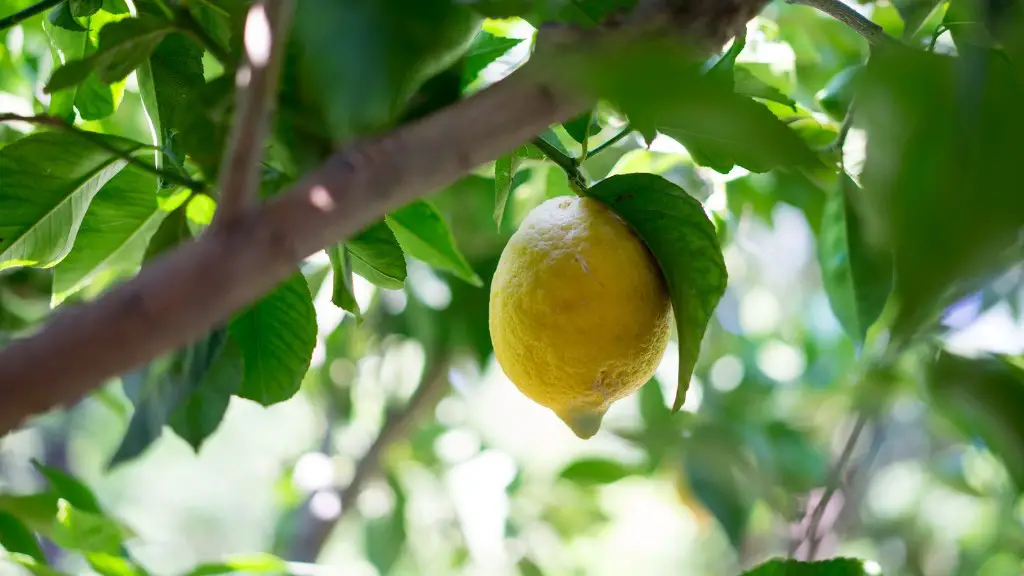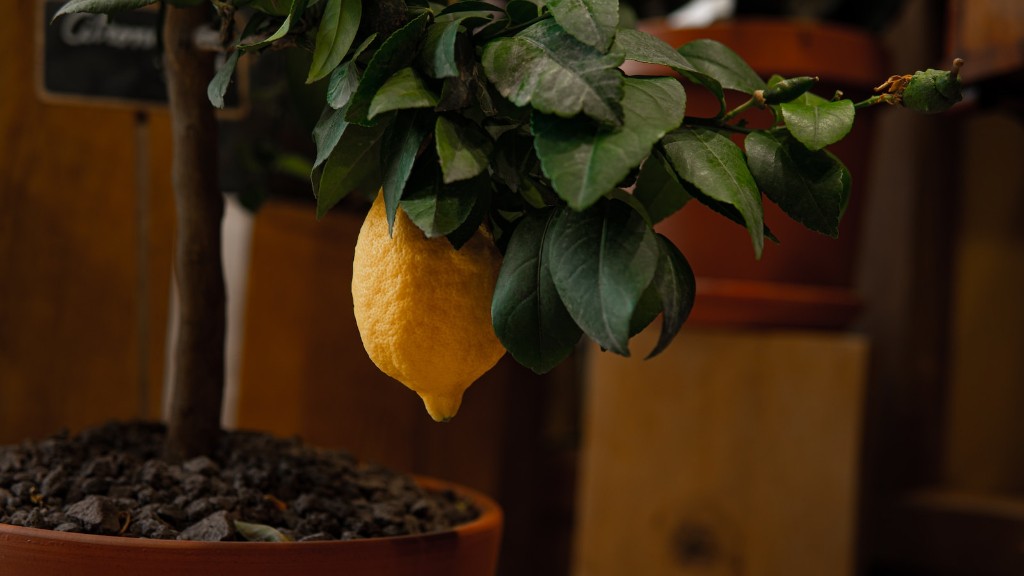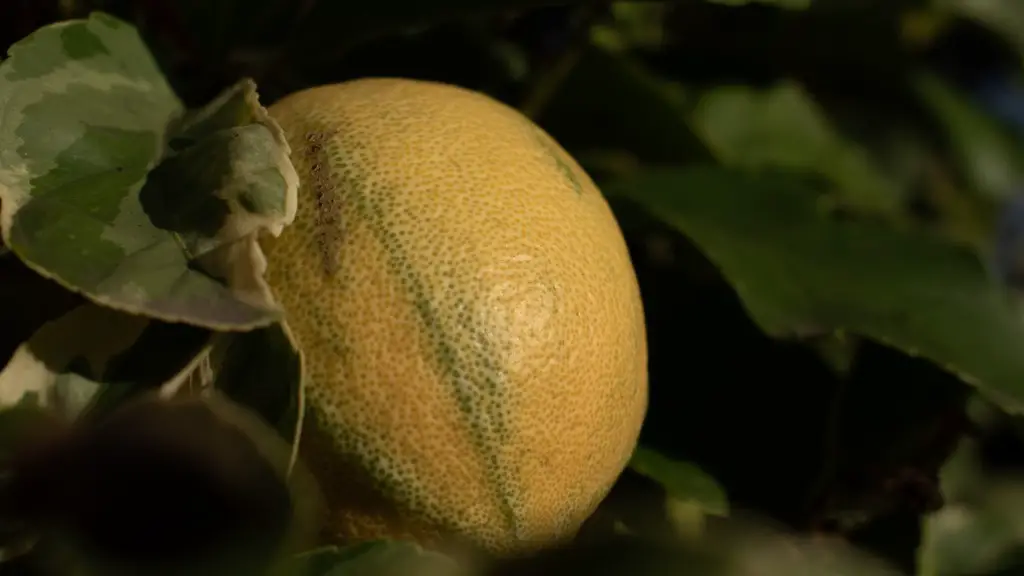Lemon trees are great, giving tangy and juicy lemons that can add that “zing” to almost any dish, while also adding an attractive feature to any home or garden. If you are keen to grow your own lemon tree, but lack the space, you can easily do so in a pot. Here are some tips on how to maintain a healthy lemon tree in a pot.
First, you should choose a pot that is big enough to house the tree at its full size, as lemon trees don’t like to be constantly transplanted. Terra cotta is the best material for lemon trees, as this allows the soil to dry out between waterings, so it is recommended to choose a pot with at least one drainage hole at the base.
Secondly, the soil should be an acidic soil mix – ideally peat moss, coarse sand, and organic material such as compost or vermiculite. The soil should be moist, but not soggy. Check the soil moisture levels before every watering, as lemon trees can be prone to root rot if the soil is kept too wet.
Thirdly, while it is important to keep the soil moist, do not over water the tree. Water your lemon tree once or twice a week, depending on the weather, making sure the soil is damp but never boggy. You can use a liquid fertilizer to give your lemon tree the essential nutrients it needs.
Fourthly, keep in mind that lemon trees must be placed in an area that receives full sun for most of the day. Although lemon trees love the sun, you can also position it so that the harsh afternoon sun is partially shaded. If you live in an area with frequent frosts, make sure to keep your lemon tree in a warm and well-sheltered area in winter, such as a greenhouse or even a south-facing window.
Finally, lemon trees are often plagued by pests such as aphids or scale insects. To prevent infestations, regularly check your tree for signs of pests, and treat any affected areas with an appropriate insecticide or pesticide. You should also prune the tree regularly to maintain its shape and keep it healthy.
Caring for a Lemon Tree in the Winter
Lemon trees are generally hardy and can tolerate light frosts, however it is important to take extra special care over the winter months to ensure the lemon tree survives. If you live in a cold climate, it is important to protect your tree from strong winds and frost. A good way to do this is to place a cylinder of plastic or fabric around the trunk of the tree and add more insulation on very cold nights.
You should also be careful not to overwater the lemon tree in winter. During this time the tree enters into a period of dormancy and will require less water, so make sure you check the soil moisture levels before watering. Additionally, it is best not to fertilize your tree during this dormant period, as excessive fertilizing can damage the tree’s roots.
Finally, make sure you prune the tree less frequently in winter and avoid pruning any branches that the tree needs to retain its foliage and continue to bloom. Lemon trees will generally shed their leaves in autumn, however they should start growing again in spring.
Re-potting a Lemon Tree
Re-potting your lemon tree is an important part of caring for it, as it helps to keep the tree healthy and encourage growth. Re-potting should be done every two to three years, when the tree’s roots have grown too large for the current pot. Prior to re-potting, it is important to prepare the new pot by creating drainage holes in the bottom and filling it with fresh soil.
When you are ready to re-pot the tree, begin by removing it from the pot gently and brushing away the old soil from the roots. Then, carefully place the tree in the new pot and fill the pot with the prepared soil. Place the tree in a position so that it is centered in the pot, with roots spread out evenly across the surface. Gently press down any air pockets with your hands, ensuring the soil is securely packed around the roots.
To finish, water your lemon tree with a diluted liquid fertilizer and place it in direct sunlight. It is important to remember to check the soil moisture levels often – the soil should be damp but not soggy – and to water the lemon tree only when necessary.
Fertilizing a Lemon Tree
Fertilizing your lemon tree is an important part of maintaining its health and vigor. Lemon trees can often lack essential nutrients such as nitrogen, phosphorus, and potassium, as these are not readily available in soil. Therefore, it is important to use a fertilizer specifically made for citrus trees, as this will provide the necessary nutrients for the tree to thrive.
When fertilizing your lemon tree, the best time is spring, as this is when it will begin to actively grow. Use a diluted liquid fertilizer, following the instructions on the product packaging, and apply it directly to the soil. Alternatively, if you prefer to use a dry fertilizer, simply sprinkle it around the base of the tree before watering.
It is important to remember not to over-fertilize your lemon tree, as this can damage the tree’s roots and cause it to become nutrient deficient. A good rule of thumb is to apply the fertilizer every four to six weeks, depending on the season, and to check the soil regularly to ensure the tree is not being over-fertilized.
Dealing with Pests
One of the most common problems for lemon trees is pests such as aphids or scale insects. These pests can quickly infest a lemon tree, causing leaves to yellow and die prematurely. Therefore, it is important to regularly check your tree for signs of pests. If you do find any, you should treat the affected area with an appropriate insecticide or pesticide.
The best way to prevent infestations is to keep your tree healthy with regular pruning and fertilizing. Additionally, you should make sure to remove any leaves or fruit that fell on the ground, as this can attract pests. Finally, if you are using any form of pesticide or insecticide, make sure to follow the instructions on the product carefully, as overuse can damage the tree.
Maintaining Healthy Soil
Keeping healthy soil is a key component of growing a healthy lemon tree, as this will provide all the essential nutrients and minerals the tree needs to thrive. To do this, it is important to ensure the soil is well-aerated and adequately drained. A good way to do this is to mix in peat moss, coarse sand, and organic matter such as compost or vermiculite.
You should also use an acidic soil mix, as lemon trees need a soil pH of around 5-6. Additionally, make sure to use a liquid fertilizer to give your lemon tree the necessary nutrients. Finally, it is important to regularly check the soil moisture levels to make sure the tree is not being overwatered, as this can cause root rot.




